 W
WKorea's military history spans thousands of years, beginning with the ancient nation of Gojoseon and continuing into the present day with the countries of North Korea and South Korea, and is notable for its many successful triumphs over invaders. Throughout its history, Korea has boasted numerous exceptional leaders who gained outstanding victories against numerically superior enemies. Famed leaders credited with defending Korea against foreign invasions include: Eulji Mundeok of Goguryeo, who defeated Sui China during the Goguryeo–Sui War; Yeon Gaesomun of Goguryeo, who defeated Emperor Taizong of Tang China during the Goguryeo–Tang War; Gang Gam-chan of Goryeo, who defeated the Khitan Empire during the Goryeo-Khitan War; Choe Yeong and Yi Seong-gye of Goryeo, who defeated the Red Turbans, who later established Ming China, during the Red Turban Invasions; and Yi Sun-shin of Joseon, who defeated the Japanese at sea during the Imjin War. Other notable leaders include: Gwanggaeto the Great of Goguryeo, who created a great empire in Northeast Asia through conquest, and subjugated the other Korean kingdoms of Baekje, Silla and Gaya to bring about a brief unification of the Three Kingdoms of Korea; Geunchogo of Baekje, who captured Pyongyang and established overseas territories to control much of the Korean peninsula and dominate the seas; Munmu and Kim Yu-sin of Silla, who united the Three Kingdoms of Korea and defeated Tang China to gain complete control of the Korean peninsula; Dae Jo-yeong, who created Balhae from Goguryeo's ashes and reconquered Goguryeo lands lost during the Goguryeo-Tang War; Jang Bogo of Later Silla, who created a maritime empire and commanded a powerful fleet; Wang Geon, who united the Later Three Kingdoms of Korea and established Goryeo as the successor to Goguryeo; and Yun Gwan of Goryeo, who defeated the Jurchens and constructed nine fortresses in Manchuria.
 W
WAn Bangjun was one of the Neo-Confucian scholars, politicians and writers of the Korean Joseon Dynasty and he was a people's Militia leader during the Japanese invasions of Korea.
 W
WBak Jin, also known as Park Jin, was a Korean Joseon Dynasty Army general and politician. He was one of the Korean generals of the Imjin War.
 W
WThe Board of Marshals (원수부,元帥府) was the ministry which managed over all the military of the Korean Empire. This was for the centralization of power towards the then-emperor, Gojong of the Korean Empire. After the establishment of the board, the power of the military authorities were handed to the Emperor. 2 regiments' worth of both the Imperial Guards and the City Guards were organized to guard the capital city, Hanyang (한성,漢城). The Board then commissioned Military Police, Military Engineers, and a Military Band. The total number of the modernized army grew to a significant number of 28,000 just before the Russo-Japanese War. After the victory, the Japanese reduced and later removed all military power from the Emperor.
 W
WA cataphract was a form of armored heavy cavalryman fielded in ancient warfare by a number of peoples in Europe, Eastern Asia, Western Asia, and Northern Africa.
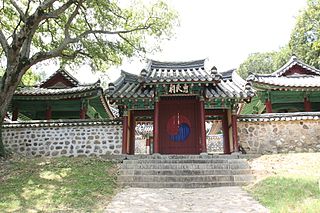 W
WLocated in Gogeum-myeon, Wando County, South Jeolla Province, South Korea, Chungmusa is a shrine built to remember the noble patriotic spirit of Admiral Yi Sun-sin. Chungmusa on Gogeum continues to hold a memorial service every year on April 28, the admiral’s birthday, and mark his patriotic fall on November 19.
 W
WEulji Mundeok (을지문덕) was a military leader of early 7th century Goguryeo, one of the Three Kingdoms of Korea, who successfully defended Goguryeo against Sui China. He is often numbered among the greatest heroes in the military history of Korea.
 W
WThe French expedition to Korea was an 1866 punitive expedition undertaken by the Second French Empire in retaliation for the earlier Korean execution of seven French Catholic missionaries. The encounter over Ganghwa Island lasted nearly six weeks. The result was an eventual French retreat, and a check on French influence in the region. The encounter also confirmed Korea in its isolationism for another decade, until Japan forced it to open up to trade in 1876 through the Treaty of Ganghwa.
 W
WThe Battle of Ganghwa was fought during the conflict between Joseon and the United States in 1871. In May, an expedition of five Asiatic Squadron warships set sail from Japan to Korea in order to establish trade relations, ensure the safety of shipwrecked sailors, and to find out what happened to the crew of the SS General Sherman. When American forces arrived in Korea, the originally peaceful mission turned into a battle when guns from a Korean fort suddenly opened fire on the Americans. The battle to capture Ganghwa Island's forts was the largest engagement of the conflict.
 W
WGim Yu-shin, also known as Kim Yu-shin, was a general in 7th-century Silla. He led the unification of the Korean Peninsula by Silla under the reign of King Muyeol of Silla and King Munmu of Silla. He is said to have been the great-grandchild of King Guhae of Geumgwan Gaya, the last ruler of the Geumgwan Gaya state. This would have given him a very high position in the Silla bone rank system, which governed the political and military status that a person could attain.
 W
WThe Hamgyong campaign, also known as Katō Kiyomasa's northern campaign, was Katō Kiyomasa's invasion of the northeastern Korean province of Hamgyeong during the Japanese invasions of Korea (1592–1598). The campaign was largely due to the help of Korean defectors who also handed over to the Japanese their princes Sunhwa and Imhae. The Japanese reached the northeastern edge of Hamgyeong, crossed the Duman River, and attacked the Orangai Jurchens, but met with heavy resistance. Katō returned south and took up residence in Anbyeon while Nabeshima Naoshige headquartered in Gilju. By winter local resistance began pushing back at Japanese occupation and laid siege to Gilju.
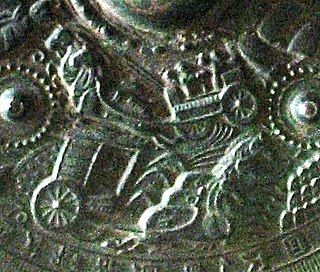 W
WHorses in East Asian warfare are inextricably linked with the strategic and tactical evolution of armed conflict. A warrior on horseback or horse-drawn chariot changed the balance of power between civilizations.
 W
WThe Korean Armistice Agreement is the armistice that brought about a complete cessation of hostilities of the Korean War. It was signed by U.S. Army Lieutenant General William Harrison, Jr. representing the United Nations Command (UNC), North Korean General Nam Il representing the Korean People's Army (KPA), and the Chinese People's Volunteer Army (PVA). The armistice was signed on 27 July 1953, and was designed to "ensure a complete cessation of hostilities and of all acts of armed force in Korea until a final peaceful settlement is achieved."
 W
WKorean armor is armor that was traditionally used in ancient times by Koreans, those fighting in and on behalf of Korea, or Koreans fighting overseas. Examples of armor from the Korean Peninsula date back to at least the Korean Three Kingdoms period. Depending on the tactical situation, Korean armor also included horse-armor and other kinds of early anti-ballistic armor before the 20th century.
 W
WThe Korean Demilitarized Zone is a strip of land running across the Korean Peninsula. It is established by the provisions of the Korean Armistice Agreement to serve as a buffer zone between North Korea and South Korea. The demilitarized zone (DMZ) is a border barrier that divides the Korean Peninsula roughly in half. It was created by agreement between North Korea, China and the United Nations Command in 1953. The DMZ is 250 kilometres long, and about 4 kilometres wide.
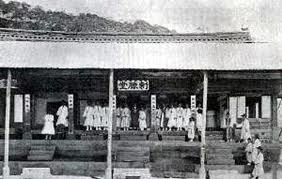 W
WThe Korean Imperial Navy Academy, or the Tongjaeyonghakdang (통제영학당,統制營學堂) was established by the Korean Empire. In British and American records, it was also known as the Royal Naval Academy or The Navy School. The 1000 Won for the establishment was borrowed from China. The construction took place in Ganghwa Island, which was a main region of foreign attacks upon Korea, such as the American expedition to Korea in 1871, the Japanese expedition to Korea in 1875, and the French expedition to Korea in 1866. It was a part of the bigger plan during the Gwangmu Reform. The academy produced about 160 officers until its close during the First Sino-Japanese War.
 W
WThe Korean Liberation Army, established on September 17, 1940 in Chungking, China, was the armed force of the Provisional Government of the Republic of Korea. Its commandant was General Ji Cheong-cheon, with General Lee Beom-seok, a hero of the Battle of Cheongsanri and future prime minister of South Korea as the Chief of Staff. Effectively a part of the Chinese forces upon which it was dependent, the army was limited by available manpower and did not get much above 339 strong. The KLA became the basis of the modern day Republic of Korea Armed Forces.
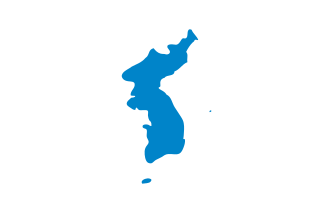 W
WKorean reunification refers to the potential reunification of North Korea and South Korea into a single Korean sovereign state. The process towards reunification was started by the June 15th North–South Joint Declaration in June 2000, and was reaffirmed by the Panmunjom Declaration for Peace, Prosperity and Unification of the Korean Peninsula in April 2018, and the joint statement of the United States President Donald Trump and North Korean Chairman Kim Jong-un at the Singapore Summit in June 2018. In the Panmunjom Declaration, the two countries agreed to work towards a peaceful reunification of Korea in the future.
 W
WThe military history of Goguryeo involves wars with other Korean kingdoms, Chinese dynasties, nomadic states and tribes, and Wa Japan. Goguryeo was a highly militaristic state; it was a powerful empire and one of the great powers in East Asia, until it was defeated by a Silla–Tang alliance in 668 after prolonged exhaustion and internal strife caused by the death of Yeon Gaesomun.
 W
WThe Imperial Armed Forces (대한제국군) was the military of the Korean Empire.
 W
WA horse archer is a cavalryman armed with a bow, able to shoot while riding from horseback. Archery has occasionally been used from the backs of other riding animals. In large open areas, it was a highly successful technique for hunting, for protecting the herds, and for war. It was a defining characteristic of the Eurasian nomads during antiquity and the medieval period, as well as the Iranian peoples, and Indians in antiquity, and by the Hungarians, Mongols, Chinese, and the Turkic peoples during the Middle Ages. By the expansion of these peoples, the practice also spread to Eastern Europe, Mesopotamia, and East Asia. In East Asia, horse archery came to be particularly honored in the samurai tradition of Japan, where horse archery is called Yabusame.
 W
WNaegeumwi was a military unit during the Joseon Dynasty period of Korean history between 1407 and 1910, responsible for protecting the king and the royal family. The number of royal guards varied between 60 and 200, at times may have reached 300.
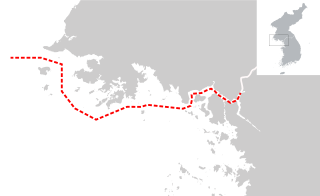 W
WThe Northern Limit Line or North Limit Line (NLL) – 북방한계선 – is a disputed maritime demarcation line in the Yellow (West) Sea between the Democratic People's Republic of Korea (DPRK) on the north, and the Republic of Korea (ROK) on the south. This line of military control acts as the de facto maritime boundary between North and South Korea.
 W
WThe Pukkwan Victory Monument is a stone stele written in Classical Chinese commemorating a series of Korean military victories between 1592 and 1594 against the invading army of Japan during the Imjin War. It was subsequently taken to Japan during the Japanese occupation of Korea during the Russo-Japanese War of 1905. It was eventually discovered on the grounds of Yasukuni Shrine in Tokyo, prompting a Korean outcry that it be returned. In a ceremony on 12 October 2005, it was turned over to officials from South Korea, who returned it to its original location, which is now in North Korea. The Korean name is commonly translated as great victory at Pukkwan. It is often referred to as the Bukgwan Victory Monument in South Korea.
 W
WPierre-Gustave Roze was a French admiral. He was born in Toulon, France and throughout his adult life served as a career naval officer. As a young rear admiral (contre-amiral) he served in Mexico during the French intervention there of 1862. In 1865 he was appointed commander of the French Far Eastern Station. As commander, he was primarily stationed in Yokohama, headquarters of the French Far Eastern Squadron, though he was involved in naval operations in nearby Korea and French Indochina in 1866. He won most recognition during the French Campaign against Korea in 1866, an offensive involving the French Far Eastern Squadron as well as French marines that proved a failed attempt to force reparations from the Korean court for its persecution of French and native Catholics.
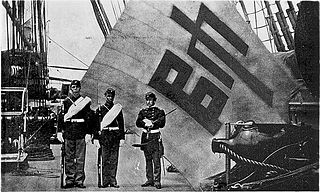 W
WThe United States expedition to Korea, known by the Koreans as the Shinmiyangyo or simply the Korean Expedition, in 1871, was the first American military action in Korea.
 W
WWokou, which literally translates to "Japanese pirates" or "dwarf pirates", were pirates who raided the coastlines of China and Korea from the 13th century to the 16th century. The wokou came from Japanese, Korean, and Chinese ethnicities which varied over time and raided the mainland from islands in the Sea of Japan and East China Sea. Wokou activity in Korea declined after the Treaty of Gyehae in 1443, but continued in Ming China and peaked during the Jiajing wokou raids in the mid-1500s, but Chinese reprisals and strong clamp downs on pirates by Japanese authorities saw the wokou virtually disappear by the 1600s.
 W
WYeon Gaesomun (603–666) was a powerful military dictator in the waning days of Goguryeo, which was one of the Three Kingdoms of ancient Korea. He is remembered for his successful resistance against Tang China under Emperor Taizong and his son Emperor Gaozong.
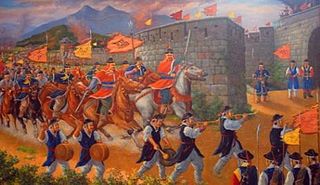 W
WYi Bok-nam was a Korean naval commander and politician of the Joseon Dynasty. He passed the military examination and attained the position of Byeongmajeoldosa for Jeolla Province. He served against the Japanese navy during the Imjin war. His courtesy name was Subo.
 W
WAdmiral Yi Sunsin was a Korean admiral and military general famed for his victories against the Japanese navy during the Imjin war in the Joseon Dynasty. Together with Chen Lin, Yi helped win the Battle of Noryang, ending the Imjin war and repelling the Japanese. Yi has since been celebrated as a national hero in Korea.